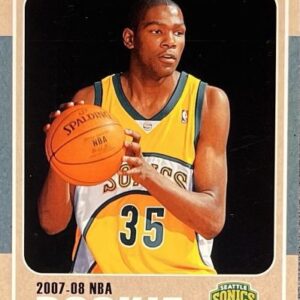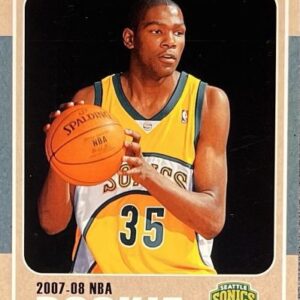The basketball card collecting world has been engaged in a long-standing debate over which card truly represents Michael Jordan’s rookie card. The contenders are the 1984-85 Star #101 and the 1986-87 Fleer #57. This debate goes beyond determining a rookie card; it encompasses the evolution of the trading card industry, concerns about authenticity, and changing grading standards.
The 1984-85 Star #101 card was released in 1984, the same year Jordan made his NBA debut with the Chicago Bulls. It had a limited distribution primarily through team sets, rather than being available in the traditional pack form. In contrast, the 1986-87 Fleer #57 card was part of the widely distributed Fleer set and was available in packs, following the conventional model of card distribution.
The Star #101 card is often referred to as an XRC, or an extended rookie card, due to its limited distribution and the fact that Star Company cards were not widely available in retail stores. XRCs usually precede a player’s first widely released card, which in Jordan’s case is the Fleer #57.
Professional Sports Authenticator (PSA), a leading grading company, has been hesitant to grade Star cards, including the 1984-85 Star #101 Jordan card, because of the high number of counterfeits and the challenges in authenticating them. However, in recent years, PSA has started grading these cards, recognizing their significance in the sports card market and developing improved authentication techniques.
The argument for the Star #101 card being Jordan’s rookie card emphasizes its historical significance. It was the first card to feature Jordan as an NBA player and was produced closer to his actual rookie year. On the other hand, the Fleer #57 card aligns with the traditional definition of a rookie card, as it was widely distributed and available in packs to the general public.
Market perception also plays a significant role in this debate. The Fleer #57 card is more widely recognized and sought after by collectors, often commanding higher prices in the market. This recognition is partly due to Fleer’s status in the industry and the card’s wider availability.
The debate between the Star #101 and Fleer #57 cards has a significant impact on collectors and investors. Purists and historians value the Star #101 card for its chronological alignment with Jordan’s entry into the NBA. However, investors and mainstream collectors tend to prefer the Fleer #57 card, considering it the “official” rookie card due to its wide distribution and recognition.
Authenticating the Star #101 card, especially due to the prevalence of counterfeits, is a major challenge. PSA’s decision to grade these cards has provided some legitimacy, but it has also sparked debates concerning grading standards and the identification of authentic cards.
The method of distribution also influences the recognition of cards in this debate. Some argue that the Star #101 card’s distribution through team sets, rather than traditional packs, makes it less of a “true” rookie card compared to the Fleer #57, which followed the standard distribution method.
This debate highlights the evolution of the sports card market and the changing perceptions of what constitutes a rookie card. The Star #101 card represents a period in the card industry when distribution and marketing methods were different from those at the time of the Fleer #57 release. As the market continues to evolve, so do the perceptions and definitions within it.
In conclusion, determining Michael Jordan’s true rookie card may ultimately come down to personal preference and interpretation. The Star #101 card offers historical significance and a direct connection to Jordan’s rookie season. On the other hand, the Fleer #57 card provides a more traditional and widely accepted rookie card experience. Both cards hold immense value in the world of sports memorabilia, representing iconic pieces of basketball history.
Looking ahead, as PSA begins grading more Star cards, there may be shifts in the value and perception of these cards. Collectors and investors should stay informed and adaptable as the landscape of sports card collecting continues to evolve. Whether one sides with the 1984-85 Star #101 or the 1986-87 Fleer #57 Michael Jordan card, both cards remain symbolic representations of one of basketball’s greatest players and a testament to the dynamic nature of sports memorabilia collecting.






